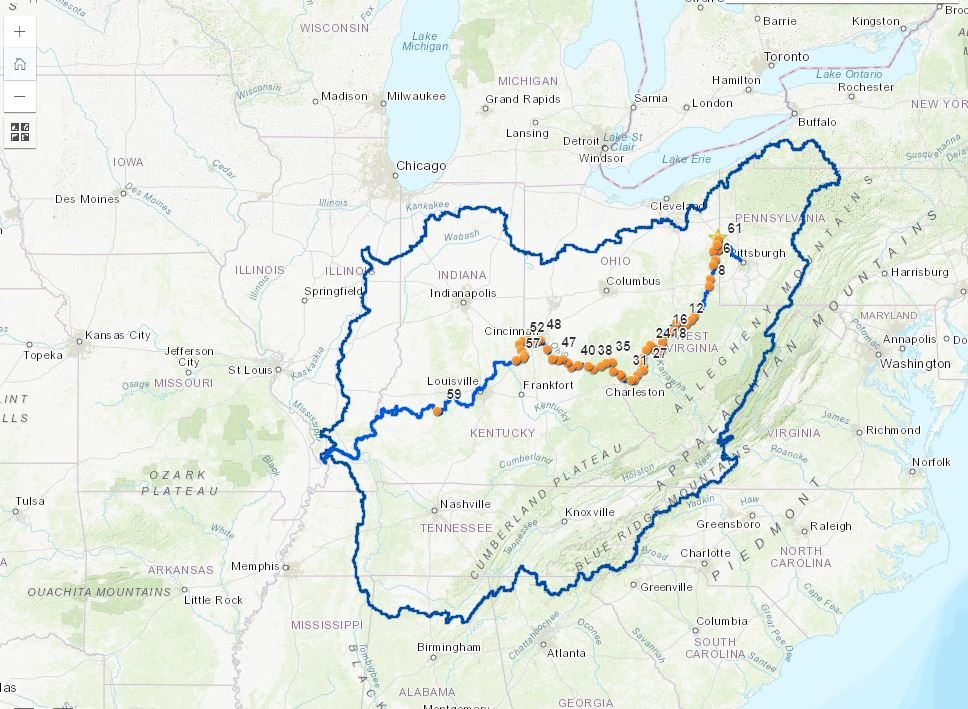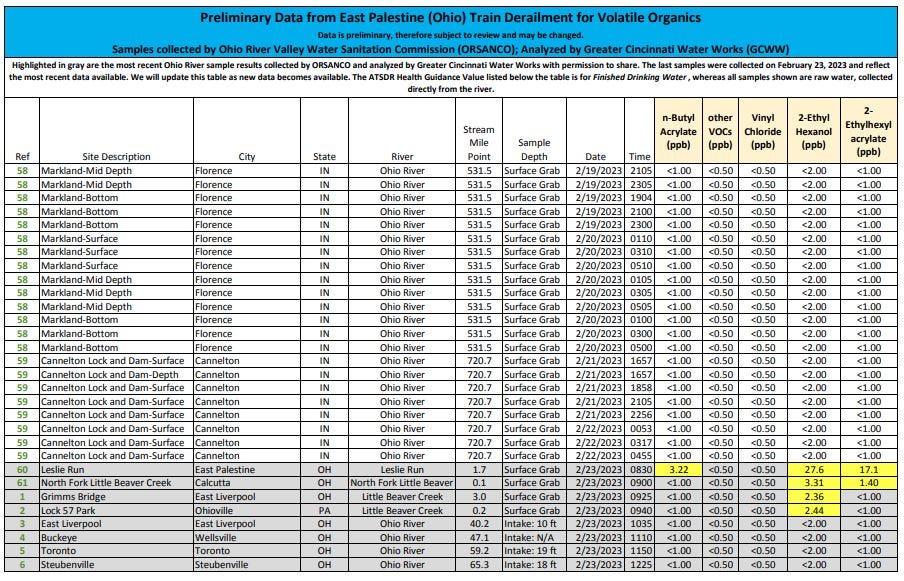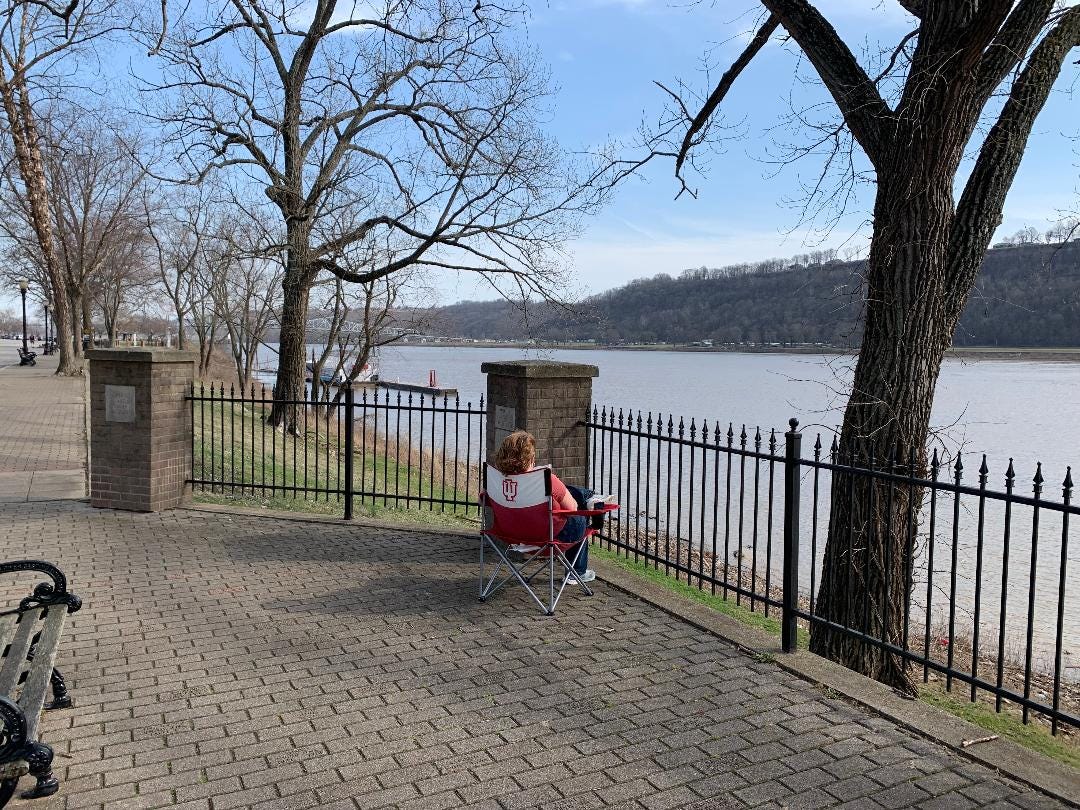More than 30 million people live in the basin of the Ohio River, which is connected by two creeks to the area of East Palestine, Ohio, where the train derailed on February 3, spilling nine train carloads of chlorine-based chemicals.
Are they at risk?
Last week, U.S. Rep. Erin Houchin, a newly elected Republican who represents the southeast Indiana district that sits on the river, organized a conference call with the Indiana Department of Emergency Management (IDEM).
Her office invited local government officials in her district to join — including mayors, county commissioners, city council members, emergency management directors and local utility department directors.
One of those on the call was Brian Jackson, the head of the utility department for the city of Madison, Indiana, on the Ohio River just downriver from Cincinnati.
Jackson said this week that most of the Feb. 22 call was spent on a presentation given by ORSANCO — the Ohio River Valley Water Sanitation Commission — which shared information on water samples it’s taken taken from the river.
He said, based on what he heard, that he doesn’t think there’s any cause for concern for residents of Madison:
“I don’t think it’s going to impact it at all. After discussing it with ORSANCO and IDEM, they’ve said there’s really no need for concern at all. They’ve been testing it all up and down the Ohio River, starting in Pennsylvania all the way down to past Louisville and mostly it was non-detected anywhere, because what the chemical does is it evaporates really quick anyway.”
Jackson said the chemical he was referring to, which was discussed the most on the call, is butyl acrylate — a clear substance that can irritate and burn skin.
In any case, the city of Madison does not depend on the Ohio River for its water supply. Instead, its water comes from seven city-owned wells.
Water from the river, Jackson says, doesn’t seep into the city’s wells.
“The rivers are only like 18 to 25-feet deep. Our wells are over 100 feet deep.”
About 70 miles upstream, it’s a different story.
The city of Cincinnati uses the Ohio River as a source of water for the city, and early on Feb. 19, the city made the decision to shut off intake from the river.
Northern Kentucky utilities followed suit.
Both both Cincinnati and Northern Kentucky resumed intake from the river after a few days, with Cincinnati saying only one chemical related to the train derailment in New Palestine was found in the river water, and that it was while the intake from the river had been turned off.
That chemical was 2-Ethyl-1-hexanol, and the city said the detection was “extremely low.”
ORSANCO has been testing the river for five different chemicals and found some detectable levels of three of them in several places in Ohio, Pennsylvania and West Virginia (a small part of the state is sandwiched between western Pennsylvania and eastern Ohio).

The chemicals found were butyl acrylate, 2-ethyl hexanol and 2-ethylhexyl acrylate.
No vinyl chloride was detected at any point in the river.
The lines highlighted in gray in the chart below show the data for the most recent tests, done on Feb. 23.
In a statement to the media following the Feb. 22 call, Houchin said:
“It’s clear the Biden administration has not been transparent enough with the American people about the East Palestine train derailment, particularly with communities along the river, and their slow response has left Hoosiers with many questions. That's why we worked with Indiana Department of Environmental Management (IDEM) and the Ohio River Valley Water Sanitation Commission (ORSANCO) to host today’s discussion with Southern Indiana elected officials to provide a clear update on the safety of communities along the Ohio River.
“During the call, IDEM and ORSANCO assured us that their water testing has not resulted in detectable levels of harmful chemicals in the Ohio River and that our drinking water has been deemed safe. I will continue to monitor the ongoing water assessments. We must hold the federal government accountable for their unsatisfactory response in Ohio.”
The Ohio River starts in Pittsburgh, Pennsylvania, where it is formed by the confluence of the Allegheny and Monongahela rivers.
It flows in a southwesterly direction, toward the Mississippi River, and forms the southern borders of Ohio, Indiana and Illinois, where it meets the Mississippi at Cairo.
From Pittsburgh to Cairo, the river is 981 miles in length.
A creek in East Palestine, Ohio, leads into a larger creek, which leads into the Ohio River.
In the video below, a reporter with Real America’s Voice follows the flow of water from the smaller creek in East Palestine to the larger one, Little Beaver Creek, and finds three dead deer on its banks, not far from the point where it flows into the Ohio River.









It's not vinyl chloride they should be looking for, it's the dioxins and phosgene produced by burning the vinyl chloride and polyvinyl chloride.
Thank you, Margaret!